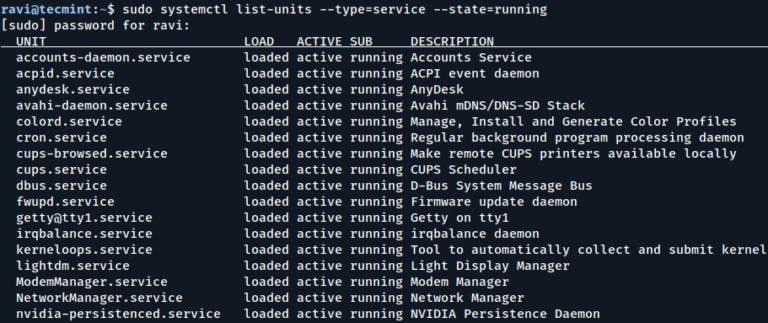
In an era where the virtual realm intertwines seamlessly with our daily lives, the stability and accessibility of digital services stand as pillars of paramount importance.
Imagine a scenario where an eCommerce platform experiences an unexpected server crash during a peak shopping season or a cloud-based application encounters downtime just as users attempt to access critical data. The repercussions of such disruptions can be far-reaching, impacting user experiences, revenue streams, and reputations.
Enter the sentinel of stability: server redundancy.
With its roots deeply embedded in the pursuit of highly available systems, server redundancy represents a strategic approach that guarantees reliability and minimizes the impact of downtime, fostering an environment where technology works seamlessly for us rather than against us.
By understanding server redundancy, you can mitigate downtime issues, safeguard your data, and maintain the seamless functioning of your business operations.
Whether you’re an IT manager, a network administrator, or a business owner, this comprehensive guide will provide you with the knowledge and insights necessary to leverage server redundancy to its fullest potential.
Table of contents
Understanding the importance of server redundancy
Server redundancy involves using additional or redundant servers to replicate the functions of primary servers.
The goal is to ensure services remain uninterrupted and data stays accessible, even during hardware failures, system crashes, or other unexpected issues.
The absence of server redundancy can expose businesses to a range of potential risks and consequences, such as:
- Data loss — This can occur if a server fails and there’s no backup system to preserve the information.
- System downtime — Any interruption to server operations can disrupt business activities, leading to a drop in productivity and potential revenue loss.
- Reputational harm — Customers and clients may lose trust in a business that can’t reliably maintain its digital services.
Benefits of redundant servers
By creating alternative pathways for data flow, redundant servers offer a range of benefits that can enhance system reliability and performance, such as:
- Data protection — Redundant servers ensure data integrity and accessibility. They prevent data loss by storing copies of all information and allowing access to these copies if the primary server goes offline.
- Downtime reduction and boosting business continuity — These server replicants are crucial for minimizing the operational impact of server failures and maintaining business continuity.
- Disaster recovery capabilities — In the event of a major incident or failure, redundant servers allow for quick system restoration, minimizing the recovery time and reducing the potential damage to the business.
- Scalability —As a business grows, its server needs will grow, too. With redundant servers, companies can easily expand their infrastructure as needed and add additional capacity without disrupting existing operations, providing a smooth pathway for growth.
Core server redundancy concepts
There is a difference between the concepts of server redundancy and the types of server redundancy. The core concepts of server redundancy are the different ways multiple servers can be used to ensure that critical applications and data are always available. These include:
Failover
Failover is the process of automatically redirecting traffic from a failed server to a healthy, redundant server. This ensures that if the primary server becomes unavailable, the backup server takes over without disruption to services.
Businesses can implement failover at various levels, including hardware, software, and application layers.
Load balancing
Load balancing refers to the practice of distributing incoming network traffic or workloads across multiple servers or resources. It provides additional capacity during high-traffic periods, preventing performance degradation, maintaining optimal user experiences, and ensuring no single server is overwhelmed.
The primary goals of load balancing are to optimize resource utilization, enhance system reliability, and ensure that no single server becomes overwhelmed with too much traffic or workload. The load balancer receives all incoming requests and then distributes them to the servers in the pool based on a set of algorithms. The most common load-balancing algorithms are:
- Round robin — With this algorithm, the server requests are distributed, meaning each server gets an equal number of requests.
- Weight-based — This algorithm distributes requests based on the weight of each server. A server with a higher weight will receive more requests than one with a lower weight.
- Fewest connections — This algorithm distributes requests to the server with the fewest connections. This helps to ensure that no server is overloaded.
- Health checks — Load balancers can also perform health checks on servers to ensure they are up and running. If a server is unhealthy, the load balancer will stop sending requests.
The optimal algorithm depends on the specific needs and configuration of your network. Your network may require algorithms to fit the following two needs:
- Network load balancing (NLB) — Incoming traffic is distributed across multiple servers, ensuring even distribution of workloads and preventing any single server from becoming overwhelmed.
- Application load balancing — Load balancers direct requests to specific servers based on factors like server health, capacity, and the type of request.
This proactive approach is critical to maintaining a robust, reliable, high-performing IT infrastructure.
Replication
Replication involves copying data from a primary server to one or more secondary servers. This can be synchronous (real time) or asynchronous (with a delay). There’s also semi-synchronous replication, which offers a middle ground between the two.
Replication enhances data availability but can lead to data inconsistencies in asynchronous setups.
Mirroring
Mirroring involves maintaining an identical dataset in two or more locations. This is typically used with databases, where every transaction performed on the primary is replicated on the mirror.
This ensures data consistency but requires high network bandwidth for real-time synchronization.
Recovery time objective (RTO) and recovery point objective (RPO)
RTO is the targeted duration within which a system should be restored after a failure, while RPO is the maximum tolerable amount of data loss measured in time.
These concepts help define how quickly the redundancy system needs to kick in and how much data loss is acceptable.
Active-passive redundancy
In an active-passive setup, one server (the active) handles the workload while another (the passive) remains on standby. If the active server fails, the passive one takes over. This method ensures seamless service continuity, even if the primary server fails.
Consider a business that runs a critical application that cannot afford downtime but doesn’t need to operate at full capacity all the time. An active-passive redundancy setup would be ideal here, as the standby server ensures continuity if the primary server fails.
Active-active redundancy
Active-active redundancy involves multiple servers actively handling the workload simultaneously. If one server fails, the others continue, ensuring no service interruption.
This setup is beneficial for an eCommerce website experiencing high traffic volumes that must remain available 24/7. Multiple servers share the workload. If one server fails, others continue serving users without interruption.
N+1 redundancy
N+1 redundancy is a general redundancy approach where N represents the number of components (like servers) needed for operation, while +1 is an additional backup. If any of the N components fail, the backup ensures continuity.
For instance, imagine a data center has 10 cooling units but only requires nine to maintain the right temperature. If one cooling unit fails, the backup unit can prevent overheating.
M+N redundancy
M+N server redundancy provides a higher level of availability than N+1 redundancy. In M+N redundancy, there are N additional servers beyond the minimum number needed to perform the required tasks. This means the system can still function even if M servers fail.
For example, if a website requires three servers to function, an N+1 redundancy scheme would require four servers. This is because one server would be the backup for the other three. However, an M+N redundancy scheme would require seven servers. Three servers would be the minimum number needed to function, and four additional servers would be available as backups.
M+N redundancy is a more expensive and complex solution than N+1 redundancy. However, it provides a higher level of availability and can be a good choice for mission-critical systems.
Exploring types of redundant servers
You can implement the above redundancy concepts by choosing from the following types of redundant servers that best suit your business needs and resources:
Standby servers
Standby servers are backup systems that take over when the primary server fails. Depending on how they’re set up, they can be classified as hot, cold, or warm.
- Hot standby server — This duplicate system runs parallel to the primary system. It can take over immediately in the event of a failure, ensuring no service disruption. However, maintaining a hot standby can be expensive due to the need for duplicate hardware and constant synchronization.
- Cold standby server — This backup system can be started if the primary fails. It might not have the most recent data and may take longer to get online, but it’s less expensive to maintain than a hot standby.
- Warm standby server — This is a middle-ground option between hot and cold. It’s usually up and running but not processing live data. It can take over faster than a cold standby but may still require manual steps.
Clustering
In a cluster, multiple servers work together and are viewed as a single system. There are two different cluster configurations:
- Active-active clusters — All servers in the cluster run applications and share the workload. This increases performance and availability but requires complex synchronization to prevent data inconsistencies.
- Active-passive clusters —Only one server handles the workload while the others remain on standby. This provides high availability at a lower cost but does not increase performance.
Distributed systems
In distributed systems, components run on networked computers that communicate and coordinate their actions to appear as a single coherent system. This design can provide high availability and performance but requires careful management to prevent data inconsistencies.
An important concept in distributed systems is the CAP theorem (also known as Brewer’s theorem), which states that it’s impossible for a distributed system to simultaneously provide consistency, availability, and partition tolerance.
For example, a system that prioritizes consistency may sacrifice availability or partition tolerance. A system that prioritizes availability may sacrifice consistency or partition tolerance. Businesses must understand these trade-offs when designing their redundant server strategy.
Geographic redundancy
Also known as disaster recovery, geographic redundancy involves having backup servers and data centers in different geographical areas. If a natural disaster, power outage, or other catastrophic event affects one location, services can continue from another.
A global company, for instance, offering a cloud service and needing to protect against regional disasters (e.g., earthquakes, floods) would benefit from this setup. If a catastrophe impacts one data center in one region, a data center in another region can take over, ensuring continuous service availability.
Implementing server redundancy: Steps and considerations
Implementing server redundancy is a multifaceted process that requires careful planning and execution. Here are the key steps involved:
- Assessment — Start by determining your redundancy needs based on risk, criticality, and budget. Identify which systems are critical to your operations and what the impact would be if they were to fail.
- Hardware — Acquire identical or compatible servers/components for backup. This ensures smooth failover in case the primary server goes down.
- Software — Ensure consistent software and operating system versions across servers. Regular updates are crucial to maintaining system security and performance.
- Network configuration — Implement load balancers, define IP failover, and set up mirrored storage or shared storage solutions. VLAN configurations and subnet design can also play roles in redundancy strategies, especially in larger environments.
- Data sync — Keep data synchronized between primary and redundant servers using solutions like database replication. This ensures data availability even if the primary server fails.
- Failover mechanisms —Set up automatic failover processes and test them regularly. This ensures that your system can quickly switch to a backup server in case of primary server failure.
- Monitoring — Implement monitoring tools to watch for server health, performance, and potential failures. Early detection of issues can prevent downtime and data loss.
- Regular testing — Simulate failures periodically to ensure redundancy systems work as intended. This helps identify and fix any issues before they cause real problems.
- Alerting and communication — Have effective alert mechanisms in place and ensure the right people are informed in case of failures. It’s also important to have a communication plan for customers/users in case of outages.
- Training and documentation — Ensure that IT staff are trained on the redundancy systems in place and maintain clear documentation for troubleshooting. This helps ensure quick and effective responses to any issues.
To make your redundancy endeavor even smoother, keep the following considerations in mind:
- Choose the right type of redundancy for your business needs and budget. Not every system may need the highest level of redundancy.
- Leverage virtualization technologies (e.g., VMware)to reduce hardware costs and increase flexibility.
- Keep all configurations, software, and systems updated to prevent performance issues and security vulnerabilities.
- Have a clear disaster recovery plan and business continuity plan in place. Redundancy is often tied to these strategies, so it’s important to consider them together.
- Consider managed hosting services, like Liquid Web,if managing redundancy in-house is too complex or costly. These services can handle all aspects of server redundancy for you, ensuring high availability and performance without the need for in-house expertise.
How Liquid Web solutions support server redundancy
Liquid Web is a leading hosting provider known for offering high-performance hosting services with a focus on reliability, security, and customer support. Even better, Liquid Web offers a range of hosting solutions designed to support server redundancy and ensure high availability and performance for your business, like:
- Server clusters — Liquid Web’s server clusters provide custom platforms designed for maximum uptime. These clusters utilize multiple servers to ensure that if one server fails, the others can take over, effectively reducing the risk of downtime.
- High availability —A high-availability setup ensures that your website remains accessible even if one server fails, providing a reliable online presence for your business. Liquid Web’s high-availability hosting offers multi-server setups to minimize downtime.
- Cloud dedicated and VMware private cloud —Liquid Web’s cloud dedicated servers and VMware private cloud solutions offer inherent redundancy benefits. They provide a flexible and scalable environment that ensures high availability and performance.
- Database hosting —With redundant solutions, your business can ensure the availability and integrity of your data with Liquid Web’s database hosting solutions.
- Private VPS parent — With Liquid Web’s private VPS parent, you can deploy multiple redundant VPS on a private server. This setup provides a high level of control and flexibility, allowing you to manage your resources effectively.
- High performance — Liquid Web’s high-performance solutions distribute traffic across servers for load balance. This not only enhances performance but also acts as a redundancy mechanism, ensuring continuous system availability.
- Health Insurance Portability and Accountability Act (HIPAA) compliant hosting —Keeping sensitive data secure and available, Liquid Web’s HIPAA compliant hosting provides a redundant infrastructure for healthcare data.
- Custom solutions — Whether you need a unique redundancy configuration or a specific server setup, Liquid Web can provide a solution that meets your requirements.
In addition to these robust redundancy solutions, Liquid Web offers 24/7 customer support and complimentary migrations. These value-added services can ease the process of setting up and maintaining server security and redundancy, ensuring a smooth and hassle-free experience for your business. With Liquid Web, you can have peace of mind knowing that your online presence is reliable, secure, and highly available.
Whether you’re a small business or a large enterprise, Liquid Web has a solution tailored to your specific needs.
Improve your server infrastructure with Liquid Web
Server redundancy is an essential strategy for ensuring high availability, reliability, and performance in your IT infrastructure. By implementing redundant servers and complementary strategies, you can significantly reduce the risk of downtime and data loss.
However, setting up and managing server redundancy requires careful planning, regular maintenance, and a deep understanding of your network’s needs and resources – that’s where Liquid Web comes in!
With a range of hosting solutions, from fully managed hosting to high availability hosting and cloud VPS hosting, Liquid Web can help you implement and manage server redundancy effectively.
Liquid Web’s tailored solutions, such as server clusters, cloud dedicated servers, and HIPAA compliant hosting, offer inherent redundancy benefits.
Don’t leave your business’s uptime to chance. Contact Liquid Web today to improve your server infrastructure and experience the peace of mind that comes with reliable and high-performing redundant servers!





